Our goal is to attract and retain talented and diverse trainees to earn PhDs in their home departments and programs with an emphasis on interdisciplinary training that focuses on sexual development and reproductive behavior. We will also provide advanced training to recent PhDs.
For information on how CTRD has shaped the lives of past trainees and where they are now, see Testimonials.
Current Trainees | Past Trainees: 2016-2024 | Past Trainees: 2010-2016 | Past Trainees: 2005-2010
Current Trainees
Predoctoral Trainees
Elizabeth Coggeshall
 Elizabeth is a Biological Anthropology PhD Candidate in PEEL. She has worked with alloprimates for 10 years and in a variety of contexts. This includes Costa Rica, South Africa, Chimpanzee Sanctuary Northwest, Thailand, Bhutan, and now is conducting her PhD research in the Himalayas of India as the co-director of the Himalayan Langur Project. Elizabeth’s research aims to understand how mother-offspring dyads respond to anthropogenic stressors (food loss, human interactions, dog attacks, disruptive sounds) and investigate how social buffering effects dyad physiology (GMB and endocrine system) and behavior in response to the aforementioned stressors. Social buffering is a critical process for species, group, and individual survival and provides insight into primate adaptation, life history, and conservation, within changing landscapes. Additionally, she also focuses on community engagement, bioethical and ethnoprimatological theory, as well as visual anthropology within her research. Her education includes an MSc in Primate Behavior & Ecology from Central Washington University and a BA in Anthropology from the University of Texas at Austin.
Elizabeth is a Biological Anthropology PhD Candidate in PEEL. She has worked with alloprimates for 10 years and in a variety of contexts. This includes Costa Rica, South Africa, Chimpanzee Sanctuary Northwest, Thailand, Bhutan, and now is conducting her PhD research in the Himalayas of India as the co-director of the Himalayan Langur Project. Elizabeth’s research aims to understand how mother-offspring dyads respond to anthropogenic stressors (food loss, human interactions, dog attacks, disruptive sounds) and investigate how social buffering effects dyad physiology (GMB and endocrine system) and behavior in response to the aforementioned stressors. Social buffering is a critical process for species, group, and individual survival and provides insight into primate adaptation, life history, and conservation, within changing landscapes. Additionally, she also focuses on community engagement, bioethical and ethnoprimatological theory, as well as visual anthropology within her research. Her education includes an MSc in Primate Behavior & Ecology from Central Washington University and a BA in Anthropology from the University of Texas at Austin.
Emily Hibbard
 Emily’s research investigates sex differences in response to nerve injury and subsequent treatment with gonadal hormones. Recovery from nerve injuries requires axons to regenerate back to denervated muscle and tissue, which is an unfortunately slow and flawed process often resulting in incorrect axonal connections. Males and females show inherently different rates of axon regeneration after nerve injury: males exhibit slower regeneration than females, potentially leading to worse recovery outcomes. Gonadal hormones have been implicated in this sex difference, and in fact, have been used as a treatment by accelerating recovery after nerve injury. Her dissertation aims to directly compare the efficacy of androgenic and estrogenic hormone treatments to recover locomotor function, prevent injury-induced hyperalgesia, and protect integral spinal circuitry after sciatic nerve injury in male and female rats.
Emily’s research investigates sex differences in response to nerve injury and subsequent treatment with gonadal hormones. Recovery from nerve injuries requires axons to regenerate back to denervated muscle and tissue, which is an unfortunately slow and flawed process often resulting in incorrect axonal connections. Males and females show inherently different rates of axon regeneration after nerve injury: males exhibit slower regeneration than females, potentially leading to worse recovery outcomes. Gonadal hormones have been implicated in this sex difference, and in fact, have been used as a treatment by accelerating recovery after nerve injury. Her dissertation aims to directly compare the efficacy of androgenic and estrogenic hormone treatments to recover locomotor function, prevent injury-induced hyperalgesia, and protect integral spinal circuitry after sciatic nerve injury in male and female rats.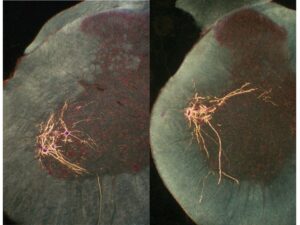
Yadira Pena-Garcia
 In her research, Yadira investigates the factors driving variation in mutation rates across mammalian species. Specifically, Yadira focuses on the male mutation bias, a phenomenon where fathers contribute more mutations to their offspring than mothers. Challenging the traditional view that replication errors are the main source of mutations, she and her lab introduced the ‘faulty male’ hypothesis, which proposes that most mutations arise from DNA damage and inefficient repair processes. Using genomic data from grizzly bears, her research reveals no significant reduction in mutation rates due to hibernation in bears, suggesting that replication during spermatogenesis is not the primary driver. Additionally, by using whole-genome sequencing data from opossum trios, she observes a strong male mutation bias, with most mutations being of paternal origin despite their early reproductive age, further supporting the ‘faulty male’ hypothesis.
In her research, Yadira investigates the factors driving variation in mutation rates across mammalian species. Specifically, Yadira focuses on the male mutation bias, a phenomenon where fathers contribute more mutations to their offspring than mothers. Challenging the traditional view that replication errors are the main source of mutations, she and her lab introduced the ‘faulty male’ hypothesis, which proposes that most mutations arise from DNA damage and inefficient repair processes. Using genomic data from grizzly bears, her research reveals no significant reduction in mutation rates due to hibernation in bears, suggesting that replication during spermatogenesis is not the primary driver. Additionally, by using whole-genome sequencing data from opossum trios, she observes a strong male mutation bias, with most mutations being of paternal origin despite their early reproductive age, further supporting the ‘faulty male’ hypothesis.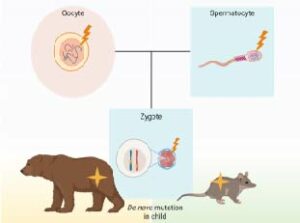
Dustin Rouselle
 Dustin is interested in how air pollution effects lung health and what role sex plays in these changes. His work aims to understand why women tend to have worse health outcomes when exposed to air pollution, such as higher mortality, greater inflammation, and greater exacerbation to existing lung disease. Due to a lack of research in this field, his current project is examining the role of sex on ozone-induced lung inflammation. By using a specialized mouse model, Dustin will understand how the individual components of sex (chromosomal and gonadal sex) alter lung function and immune response when exposed to chronic ozone. He hopes to continue this research in the by examining the molecular pathways responsible for these changes.
Dustin is interested in how air pollution effects lung health and what role sex plays in these changes. His work aims to understand why women tend to have worse health outcomes when exposed to air pollution, such as higher mortality, greater inflammation, and greater exacerbation to existing lung disease. Due to a lack of research in this field, his current project is examining the role of sex on ozone-induced lung inflammation. By using a specialized mouse model, Dustin will understand how the individual components of sex (chromosomal and gonadal sex) alter lung function and immune response when exposed to chronic ozone. He hopes to continue this research in the by examining the molecular pathways responsible for these changes.
Postdoctoral Trainees
Isaac Miller-Crews
 Isaac is interested in harnessing comparative and integrative approaches to understand the evolution of social behavior. Isaac’s doctoral research traced how an individual prepares, participates, and succeeds at reproduction, thereby providing a powerful framework for the study of social behavior and its neuromolecular underpinnings in the highly social African cichlid fish, Astatotilapia burtoni.
Isaac is interested in harnessing comparative and integrative approaches to understand the evolution of social behavior. Isaac’s doctoral research traced how an individual prepares, participates, and succeeds at reproduction, thereby providing a powerful framework for the study of social behavior and its neuromolecular underpinnings in the highly social African cichlid fish, Astatotilapia burtoni.
As a CTRD Postdoctoral Fellow working with Dr. Kim Rosvall and Dr. Matthew Hahn, Isaac plans to investigate how neu rogenomic sex differences arise over the course of macroevolutionary time using a combination of neurobiological transcriptomic and evolutionary modeling approaches.
rogenomic sex differences arise over the course of macroevolutionary time using a combination of neurobiological transcriptomic and evolutionary modeling approaches.
Rebecca Westwick
 Rebecca researches variation in behavior and cognition in animals. Her work for the CTRD program focuses on factors that shape behavioral and cognitive differences in Onthophagus dung beetles. These factors span multiple levels of biological organization, including a) neurobiological mechanisms, such as brain gene expression; b) developmental behavioral plasticity, such as early-life nutrition and maternally-inherited microbiota; c) reproductive factors, such as sex and alternative reproductive tactics; and d) evolutionary drivers, such as the role of these species’ biological invasions across the USA and Australia.
Rebecca researches variation in behavior and cognition in animals. Her work for the CTRD program focuses on factors that shape behavioral and cognitive differences in Onthophagus dung beetles. These factors span multiple levels of biological organization, including a) neurobiological mechanisms, such as brain gene expression; b) developmental behavioral plasticity, such as early-life nutrition and maternally-inherited microbiota; c) reproductive factors, such as sex and alternative reproductive tactics; and d) evolutionary drivers, such as the role of these species’ biological invasions across the USA and Australia.
Past Trainees: 2016-2024
Predoctoral Trainees
Liz Aguilar

Liz’s research investigates mechanistic and functional causes of individual differences in social behavior in free-living female tree swallows (Tachycineta bicolor), for an integrative view on how variation is maintained. Using neurogenomic and behavioral approaches, her dissertation will examine how both evolutionary and proximate mechanisms work together to build an aggressive female, an often-overlooked perspective. Further, social aggression requires endurance, as females engage in extended aerial chases and intense physical attacks during competition for nestboxes, so Liz is also interested in metabolism and energetics.
Justin Bollinger
 Justin’s research focused on sex differences in, and stress effects on, microglia and microglia-neuron interactions in the medial prefrontal cortex (mPFC) of rats. Microglia are the resident immune cells of the brain, and are capable of regulating neuronal transmission and architecture. Male and female rats show opposite patterns of stress-induced microglial activation in mPFC: chronic stress increases microglial morphological activation in males, but decreases microglial activation in females. His dissertation addressed the mechanistic role of gonadal hormones in this difference, as well as the role of microglia in maintaining and remodeling dendritic architecture in mPFC, synapse-associated gene expression, and behavior. Justin is currently pursuing postdoctoral training at the University of Cincinnati.
Justin’s research focused on sex differences in, and stress effects on, microglia and microglia-neuron interactions in the medial prefrontal cortex (mPFC) of rats. Microglia are the resident immune cells of the brain, and are capable of regulating neuronal transmission and architecture. Male and female rats show opposite patterns of stress-induced microglial activation in mPFC: chronic stress increases microglial morphological activation in males, but decreases microglial activation in females. His dissertation addressed the mechanistic role of gonadal hormones in this difference, as well as the role of microglia in maintaining and remodeling dendritic architecture in mPFC, synapse-associated gene expression, and behavior. Justin is currently pursuing postdoctoral training at the University of Cincinnati.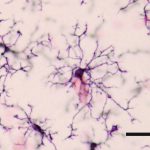
Lauren Brunner
 Lauren’s research revolves around how internal state and external context affect neural processing of courtship vocalizations in house mice (Mus musculus). She is especially interested in how exposure to social stressors may influence auditory processing and vocal behavior in both male and female mice. By using behavioral and physiological techniques, she is able to examine how differences in social experience and environmental conditions affect how mice respond to important social signals: courtship rejection vocalizations (broadband vocalizations).
Lauren’s research revolves around how internal state and external context affect neural processing of courtship vocalizations in house mice (Mus musculus). She is especially interested in how exposure to social stressors may influence auditory processing and vocal behavior in both male and female mice. By using behavioral and physiological techniques, she is able to examine how differences in social experience and environmental conditions affect how mice respond to important social signals: courtship rejection vocalizations (broadband vocalizations).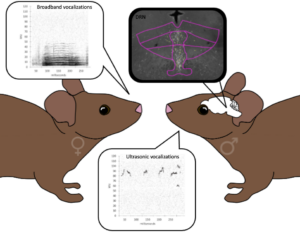
Samantha Cohen

Sam studied the decision-making processes of mate choice in humans. Her dissertation research examined whether the search strategies used in romantic partner choice generalize to other non-romantic social domains. She was particularly interested in modelling both relationship entrance and exit behaviors, using traditional psychological lab experiments and agent-based models. Sam also studies sexual strategizing, such as changes in courtship behavior in online environments, such as Tinder, and at reproductive milestones, such as menopause. Sam is currently a Postdoctoral Researcher at the University of Virginia.
Megan Freiler
 Megan’s dissertation focusesd on the neuroendocrine mechanisms that regulate species and sex differences in social communication in apteronotid weakly electric fish. Electric fish produce an electric organ discharge (EOD) and modulate the frequency of this discharge during agonistic and courtship interactions. The structure and use of EOD modulations are often sex- and species-specific. Megan studied how the function of these signals varies across social context in species that vary in their degree of sociality and sexual dimorphism. She was also interested in how steroid hormone production and neuromodulator receptor gene expression in sensory brain regions changes in response to social experience across species and sex. She is currently pursuing postdoctoral training at the University of Minnesota.
Megan’s dissertation focusesd on the neuroendocrine mechanisms that regulate species and sex differences in social communication in apteronotid weakly electric fish. Electric fish produce an electric organ discharge (EOD) and modulate the frequency of this discharge during agonistic and courtship interactions. The structure and use of EOD modulations are often sex- and species-specific. Megan studied how the function of these signals varies across social context in species that vary in their degree of sociality and sexual dimorphism. She was also interested in how steroid hormone production and neuromodulator receptor gene expression in sensory brain regions changes in response to social experience across species and sex. She is currently pursuing postdoctoral training at the University of Minnesota.
Elizabeth George
 Elizabeth’s dissertation focused on the physiological and behavioral responses to competition in female tree swallows (Tachycineta bicolor), which are songbirds that fight intensely for access to nesting sites (i.e., bird boxes). She measured both seasonal and short-term patterns of circulating hormone levels (with an emphasis on testosterone) and steroid-related neural gene expression to investigate how territorial females respond to intruders, which she simulates using taxidermic mounts placed at the entrances of nest boxes or incites among neighboring birds by temporarily reducing bird box availability. She was also interested in trade-offs between aggression, parental care, and survival, and investigated whether variation in aggression across breeding stages varied with age and reproductive success. She is currently a Postdoctoral Fellow, in the Department of Biobehavioral Health at Pennsylvania State University.
Elizabeth’s dissertation focused on the physiological and behavioral responses to competition in female tree swallows (Tachycineta bicolor), which are songbirds that fight intensely for access to nesting sites (i.e., bird boxes). She measured both seasonal and short-term patterns of circulating hormone levels (with an emphasis on testosterone) and steroid-related neural gene expression to investigate how territorial females respond to intruders, which she simulates using taxidermic mounts placed at the entrances of nest boxes or incites among neighboring birds by temporarily reducing bird box availability. She was also interested in trade-offs between aggression, parental care, and survival, and investigated whether variation in aggression across breeding stages varied with age and reproductive success. She is currently a Postdoctoral Fellow, in the Department of Biobehavioral Health at Pennsylvania State University.
Kayleigh Hood
 Kayleigh’s research focused on the neural mechanisms underlying sexual communication in house mice (Mus musculus). Her dissertation examined the relationship between serotonin fluctuations within the auditory midbrain (inferior colliculus; IC) and male sexual response to female auditory cues. Using behavioral and neurophysiological techniques, her research investigated how serotonin in the IC of male mice encodes female communication during sexual interactions. Kayleigh is currently a Biologist at the National Science Foundation.
Kayleigh’s research focused on the neural mechanisms underlying sexual communication in house mice (Mus musculus). Her dissertation examined the relationship between serotonin fluctuations within the auditory midbrain (inferior colliculus; IC) and male sexual response to female auditory cues. Using behavioral and neurophysiological techniques, her research investigated how serotonin in the IC of male mice encodes female communication during sexual interactions. Kayleigh is currently a Biologist at the National Science Foundation.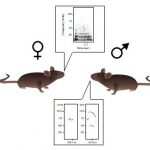
Sierra McAlister

Sierra’s research explored how manipulating salient characteristics within female signals and contextual cues affect the neural processing surrounding male house mice (Mus musculus) courtship vocalizations. She was especially interested in understanding how multiple sensory systems (specifically the olfactory and auditory systems) work together to influence auditory processing and behavioral responses during opposite sex interactions. In addition to using behavioral studies, she also used physiological techniques to understand how manipulating auditory signals and context is represented in the brain. To do so, she examined the relationship between three interconnected brain regions by measuring c-Fos and serotonin fluctuations. Sierra completed her Ph.D. in 2024, and is currently a Research Associate at Indiana University.
Kara Million
 Kara’s research focused on parasites, mate choice, and immunogenetic diversity in darters, colorful freshwater fish. In her dissertation research she used field, experimental, and molecular techniques to evaluate several competing hypotheses proposed to explain the maintenance of high genetic diversity in MHCs, a component of the vertebrate immune system. Kara monitored patterns of parasite infection in wild darters and used next-gen sequencing techniques to search for signatures of heterozygote advantage or negative frequency-dependent selection at MHC loci. She also used behavioral trials in the lab to determine whether mate choice mediates MHC diversity in darters. Kara is currently an Assistant Professor at the University of North Alabama.
Kara’s research focused on parasites, mate choice, and immunogenetic diversity in darters, colorful freshwater fish. In her dissertation research she used field, experimental, and molecular techniques to evaluate several competing hypotheses proposed to explain the maintenance of high genetic diversity in MHCs, a component of the vertebrate immune system. Kara monitored patterns of parasite infection in wild darters and used next-gen sequencing techniques to search for signatures of heterozygote advantage or negative frequency-dependent selection at MHC loci. She also used behavioral trials in the lab to determine whether mate choice mediates MHC diversity in darters. Kara is currently an Assistant Professor at the University of North Alabama.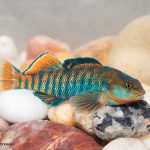
Kelly Moench
 Kelly’s research focuses on sex differences in the lasting effects of chronic stress on the brain and behavior. Specifically, she is interested in how chronic stress alters responsivity to novel stressors following a rest period (two-hit stress) differentially in male and female rats. Most rodent models of chronic stress focus on the immediate effects of stress, leaving a gap in our understanding of the longer-term sequelae of changes that may persist in the days after stress ends. Using electrophysiology and behavioral assays, her dissertation elucidated changes in neuronal activity within medial prefrontal cortex, as well as changes in behaviors mediated by this region, following an initial chronic stressor and rest period, as well as after two-hit stress in males and females. Kelly pursued postdoctoral training at Indiana University-Purdue University Indianapolis, and is now a Study Design Manager | Global Project Management at Precison for Medicine.
Kelly’s research focuses on sex differences in the lasting effects of chronic stress on the brain and behavior. Specifically, she is interested in how chronic stress alters responsivity to novel stressors following a rest period (two-hit stress) differentially in male and female rats. Most rodent models of chronic stress focus on the immediate effects of stress, leaving a gap in our understanding of the longer-term sequelae of changes that may persist in the days after stress ends. Using electrophysiology and behavioral assays, her dissertation elucidated changes in neuronal activity within medial prefrontal cortex, as well as changes in behaviors mediated by this region, following an initial chronic stressor and rest period, as well as after two-hit stress in males and females. Kelly pursued postdoctoral training at Indiana University-Purdue University Indianapolis, and is now a Study Design Manager | Global Project Management at Precison for Medicine.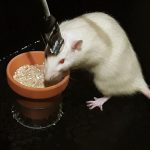
Beth Morrison
 Beth’s research focuses on maternal-offspring gut microbiome and behavior. Hamsters, like humans and other mammals, are initially colonized by bacteria from their mother. These microorganisms play a large role on early life development and may have lasting consequences into adulthood. Beth is studying how the transfer of bacteria from mothers to offspring may be disrupted in the presence of maternal antibiotics and cesarean section birth, and the effects on hormones, neurodevelopment, and behavior.
Beth’s research focuses on maternal-offspring gut microbiome and behavior. Hamsters, like humans and other mammals, are initially colonized by bacteria from their mother. These microorganisms play a large role on early life development and may have lasting consequences into adulthood. Beth is studying how the transfer of bacteria from mothers to offspring may be disrupted in the presence of maternal antibiotics and cesarean section birth, and the effects on hormones, neurodevelopment, and behavior.
Kat Munley
 Kat’s research integrated molecular, physiological, and behavioral techniques to investigate the neuroendocrine mechanisms underlying territorial aggression in Siberian hamsters (Phodopus sungorus). More specifically, Kat’s dissertation examined how seasonal fluctuations in melatonin secretion alter central and peripheral steroid hormone synthesis and aggressive behavior across reproductive states and whether these mechanisms differ between the sexes. Kat is currently an Assistant Professor at the University of Alberta.
Kat’s research integrated molecular, physiological, and behavioral techniques to investigate the neuroendocrine mechanisms underlying territorial aggression in Siberian hamsters (Phodopus sungorus). More specifically, Kat’s dissertation examined how seasonal fluctuations in melatonin secretion alter central and peripheral steroid hormone synthesis and aggressive behavior across reproductive states and whether these mechanisms differ between the sexes. Kat is currently an Assistant Professor at the University of Alberta.
Erica Nadolski
 Erica is interested in the origins, expression, and evolution of differences among the sexes, focusing on horned beetles in the genus Onthophagus. Her work aims to deepen our understanding of the developmental genetic mechanisms that allow different traits in the same individual to exhibit varying degrees of sexual dimorphism, and her work also investigates how these mechanisms evolve, facilitating the diversification of sexual dimorphism across lineages. Erica is also interested in how diverse trait types are co-regulated to facilitate the expression of secondary sexual trait complexes between morphology, physiology, and behavior. Her project will assess the degree to which morphological and behavioral dimensions of secondary sexual differences in these beetles are developmentally and genetically de-coupled, providing the potential to evolve in a modular, independent manner.
Erica is interested in the origins, expression, and evolution of differences among the sexes, focusing on horned beetles in the genus Onthophagus. Her work aims to deepen our understanding of the developmental genetic mechanisms that allow different traits in the same individual to exhibit varying degrees of sexual dimorphism, and her work also investigates how these mechanisms evolve, facilitating the diversification of sexual dimorphism across lineages. Erica is also interested in how diverse trait types are co-regulated to facilitate the expression of secondary sexual trait complexes between morphology, physiology, and behavior. Her project will assess the degree to which morphological and behavioral dimensions of secondary sexual differences in these beetles are developmentally and genetically de-coupled, providing the potential to evolve in a modular, independent manner.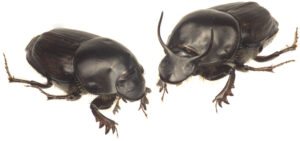
Eric Navarro
 Eric’s research investigated how differences in the valence of vocal signals may affect behavioral responses during sexual communication in house mice (Mus musculus). Females produce ultrasonic vocalizations (USV) and broadband vocalizations (BBV) during sexual interaction that may signal the females’ intent. BBVs have been associated with female rejection behaviors and USVs with positive courtship behaviors, potentially allowing the males to respond appropriately. Eric completed a Masters degree in 2024.
Eric’s research investigated how differences in the valence of vocal signals may affect behavioral responses during sexual communication in house mice (Mus musculus). Females produce ultrasonic vocalizations (USV) and broadband vocalizations (BBV) during sexual interaction that may signal the females’ intent. BBVs have been associated with female rejection behaviors and USVs with positive courtship behaviors, potentially allowing the males to respond appropriately. Eric completed a Masters degree in 2024.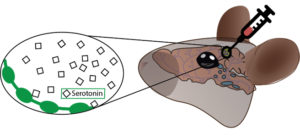
Brooke Peckenpaugh
 Brooke’s research focused on female reproductive adaptations in Drosophila. Particularly, cryptic female choice, or the physical and chemical factors determining patterns of female sperm use after mating, is known to play a central role in post-mating reproductive interactions in many organisms. Using a combination of manipulative experiments and broad-scale comparative analyses, Brooke identified both physiological and genetic mechanisms of cryptic female choice, as well as its adaptive basis. Furthermore, she studied cryptic female choice in the context of many well-documented male reproductive adaptations in Drosophila, enabling her to test hypotheses about reproductive coevolution between the sexes. She completed her Ph.D. in 2023 and is currently a Scientific Editor at JAM Post.
Brooke’s research focused on female reproductive adaptations in Drosophila. Particularly, cryptic female choice, or the physical and chemical factors determining patterns of female sperm use after mating, is known to play a central role in post-mating reproductive interactions in many organisms. Using a combination of manipulative experiments and broad-scale comparative analyses, Brooke identified both physiological and genetic mechanisms of cryptic female choice, as well as its adaptive basis. Furthermore, she studied cryptic female choice in the context of many well-documented male reproductive adaptations in Drosophila, enabling her to test hypotheses about reproductive coevolution between the sexes. She completed her Ph.D. in 2023 and is currently a Scientific Editor at JAM Post.
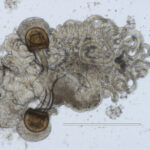
Christopher Petersen
Chris’s research focused on how patterns of neural activity fit within an anatomical framework in order to process socially relevant sensory information. By combining a neuroethological approach with tract tracing and multi-fluorescence immunohistochemistry, his dissertation aimed to elucidate the neuroanatomical substrates that facilitate serotonin release in the auditory midbrain (inferior colliculus; IC) of male and female laboratory mice. As mice use vocal cues to convey different information regarding that status of ongoing social/sexual encounters, vocalizations may have different meanings depending on the sex of the receiver. Therefore, the mechanisms that gate serotonin release within the IC, a structure that processes social vocalizations, represent one route through which sex differences in the behavior may arise. He is currently pursuing postdoctoral training with Dr. Julia Lemos in the Department of Neuroscience at the University of Minnesota.
research focused on how patterns of neural activity fit within an anatomical framework in order to process socially relevant sensory information. By combining a neuroethological approach with tract tracing and multi-fluorescence immunohistochemistry, his dissertation aimed to elucidate the neuroanatomical substrates that facilitate serotonin release in the auditory midbrain (inferior colliculus; IC) of male and female laboratory mice. As mice use vocal cues to convey different information regarding that status of ongoing social/sexual encounters, vocalizations may have different meanings depending on the sex of the receiver. Therefore, the mechanisms that gate serotonin release within the IC, a structure that processes social vocalizations, represent one route through which sex differences in the behavior may arise. He is currently pursuing postdoctoral training with Dr. Julia Lemos in the Department of Neuroscience at the University of Minnesota.
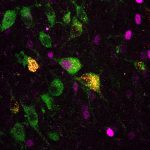
Malia Piazza

Malia’s research focuses on the bidirectional relationship between neuroendocrine activity and the mating and attachment behaviors of humans. With a biocultural perspective, she explores neuroendocrine patterns in couples, spanning a range of culturally influenced behaviors from arranged marriage to “self-choice” romantic relationships. Considering evidence that arranged marriage was prevalent during human evolution, she analyzes marriage and courtship behaviors through the lens of evolutionary mismatch theory. She is interested in comparing how these different behavioral patterns may affect life-history trade-offs associated with the hypothalamic-pituitary-gonadal (HPG) axis. Malia is also working on a number of projects focused on how health care systems influence sexual and romantic relationships, both through practitioners’ level of attention to these aspects of their patients’ lives and through the prescription of pharmaceuticals, such as SSRIs, that alter patients’ neuroendocrinology and can impact sexual and romantic outcomes.
Misty Proffitt
 Misty is interested in the evolution of physiological mechanisms which underlie sexually dimorphic behavior. In Misty’s dissertation, she examined how species variation in steroid hormone related gene expression in the brain contributes to sexually dimorphic behavior. Ghost knifefish provide a unique opportunity to examine these types of questions because 1) the electric organ discharge frequency (behavior) is controlled by a simple neural circuit, 2) this neural circuit is mediated by hormones, 3) there is species variation in the degree of sexual dimorphism in the signal. Misty used a comparative framework by examining gene expression of three closely related knifefish species, which vary with respect to degree of sexual dimorphism, to examine how hormone related genes contribute to differences in sexual dimorphic behavior. Misty is currently a Research Scientist at Crown Laboratories.
Misty is interested in the evolution of physiological mechanisms which underlie sexually dimorphic behavior. In Misty’s dissertation, she examined how species variation in steroid hormone related gene expression in the brain contributes to sexually dimorphic behavior. Ghost knifefish provide a unique opportunity to examine these types of questions because 1) the electric organ discharge frequency (behavior) is controlled by a simple neural circuit, 2) this neural circuit is mediated by hormones, 3) there is species variation in the degree of sexual dimorphism in the signal. Misty used a comparative framework by examining gene expression of three closely related knifefish species, which vary with respect to degree of sexual dimorphism, to examine how hormone related genes contribute to differences in sexual dimorphic behavior. Misty is currently a Research Scientist at Crown Laboratories.

Ellie Shell
I n response to changes in the environment, organisms can alter their traits, whether those traits are physiological responses, morphology, or behavioral (even how they choose a mate!).This ability to response to environmental variation is called plasticity. Ellie’s work focuses on determining how plasticity in adult mate choice can affect offspring plasticity and fitness using the Eastern Spadefoot toad (Scaphiopus holbrookii). She is specifically interested in how the role of the environment effects evolutionary processes, aimed at exploring whether changing climates enable or hinder adaptations of individuals. With a complex life history (anuran parents inhabit land and tadpoles inhabit bodies of water), frogs are an ideal system to study the maintenance of fitness across distinct environments. Using behavioral and physiological approaches, her dissertation will assess how shifts in temperature will affect the evolution of fitness related traits across generations.
n response to changes in the environment, organisms can alter their traits, whether those traits are physiological responses, morphology, or behavioral (even how they choose a mate!).This ability to response to environmental variation is called plasticity. Ellie’s work focuses on determining how plasticity in adult mate choice can affect offspring plasticity and fitness using the Eastern Spadefoot toad (Scaphiopus holbrookii). She is specifically interested in how the role of the environment effects evolutionary processes, aimed at exploring whether changing climates enable or hinder adaptations of individuals. With a complex life history (anuran parents inhabit land and tadpoles inhabit bodies of water), frogs are an ideal system to study the maintenance of fitness across distinct environments. Using behavioral and physiological approaches, her dissertation will assess how shifts in temperature will affect the evolution of fitness related traits across generations.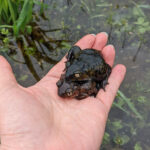
Jessica Short

Jessica’s research focuses on reproductive behaviors, intimate relationships, and sexuality. Her research uses the Relationship Dynamics and Social Life project to conduct a mixed-method analysis of how attitudes, intimate relationships, and sexual behaviors differ between sexual minority women and heterosexual women during the transition to adulthood. Specifically, she will examine three questions: 1. How do attitudes related to non-marital sex, pregnancy, and young parenthood differ between sexual minority women and heterosexual women? 2. How do patterns of intimate relationship formation and dissolution differ between sexual minority women and heterosexual women? 3: How do the experiences, sequences, and patterns of sexual behavior differ between sexual minority women and heterosexual women?
Nikki Stark
 Nikki is interested in the endosymbiont bacterium, Wolbachia. Wolbachia is an interesting microbe as it induces reproductive manipulations in its host, alters the host microbiome, and inhibits the replication of RNA viruses in an insect host. Nikki’s dissertation research focuses on the mechanism by which Wolbachia blocks RNA pathogens. Nikki studies the mechanism using a tripartite system consisting of Drosophila melanogaster, Wolbachia strain wMel, and Sindbis virus. Overall, the goal is to determine how an endosymbiont affects immune function in insects, but it will inform us about antiviral mechanisms in general and how they may differ depending on sex. Nikki is in the process of characterizing a Wolbachia-modulated host gene that inhibits Sindbis virus replication. The expression of this host gene differs between females and males; thus, Nikki is also interested in how the mechanism in which this gene affects virus replication may differ between males and females.
Nikki is interested in the endosymbiont bacterium, Wolbachia. Wolbachia is an interesting microbe as it induces reproductive manipulations in its host, alters the host microbiome, and inhibits the replication of RNA viruses in an insect host. Nikki’s dissertation research focuses on the mechanism by which Wolbachia blocks RNA pathogens. Nikki studies the mechanism using a tripartite system consisting of Drosophila melanogaster, Wolbachia strain wMel, and Sindbis virus. Overall, the goal is to determine how an endosymbiont affects immune function in insects, but it will inform us about antiviral mechanisms in general and how they may differ depending on sex. Nikki is in the process of characterizing a Wolbachia-modulated host gene that inhibits Sindbis virus replication. The expression of this host gene differs between females and males; thus, Nikki is also interested in how the mechanism in which this gene affects virus replication may differ between males and females.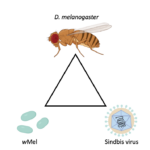
Tessa Steiniche
 Tessa’s research investigated the effects of exposure to anthropogenic pollutants on hormones in nonhuman primates. Specifically, her work examined the role of exaptations, or pre-adaptions, to environmental chemicals which may now function in interactions with evolutionarily novel anthropogenic toxicants. Broadly, this work considers the effects of endocrine-disrupting chemicals on reproductive physiology and behavior, and explores the utility in applications of evolutionary theory for toxicological risk assessment.Tessa completed her Ph.D. in 2023, and is currently a postdoctoral researcher at the Woods Hole Oceanographic Institute.
Tessa’s research investigated the effects of exposure to anthropogenic pollutants on hormones in nonhuman primates. Specifically, her work examined the role of exaptations, or pre-adaptions, to environmental chemicals which may now function in interactions with evolutionarily novel anthropogenic toxicants. Broadly, this work considers the effects of endocrine-disrupting chemicals on reproductive physiology and behavior, and explores the utility in applications of evolutionary theory for toxicological risk assessment.Tessa completed her Ph.D. in 2023, and is currently a postdoctoral researcher at the Woods Hole Oceanographic Institute.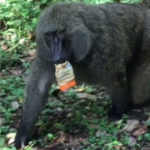
Kristyn Sylvia
 Kristyn’s research focused on the interactions among the neuroendocrine system, the reproductive system, and the immune system early in life, and how those relationships affect physiology and behavior in adult Siberian hamsters. More specifically, Kristyn was interested in studying sex differences in physiology and behavior and determining the mechanisms mediating those sex-specific effects. After pursuing postdoctoral training at Johns Hopkins University, she is now Senior Scientific Project Director at Summit Global Health.
Kristyn’s research focused on the interactions among the neuroendocrine system, the reproductive system, and the immune system early in life, and how those relationships affect physiology and behavior in adult Siberian hamsters. More specifically, Kristyn was interested in studying sex differences in physiology and behavior and determining the mechanisms mediating those sex-specific effects. After pursuing postdoctoral training at Johns Hopkins University, she is now Senior Scientific Project Director at Summit Global Health.
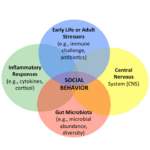
Katie Talbott

A host population can show wide variation in individual-level physiological responses to common parasites. However, the association between this variation and reproductive function remains little explored. To this end, Katie’s research focused on the impact of parasitism on host reproductive behavior and physiology, using the dark eyed junco (Junco hyemalis) and the causative agent of avian malaria (Plasmodium) as a model host-parasite system.
Katie’s work aimed to understand whether certain aspects of physiological infection response to parasitism are associated with trade-offs in reproductive capacity in male juncos. She also investigated the association between infection intensity and various measures of reproductive success in both male and female juncos; for this work, she leveraged a long-term data set and archived samples from wild, non-migratory juncos sampled near Mountain Lake Biological Station (Pembroke, VA). She received her Ph.D. in 2024, and is currently a postdoctoral researcher at the University of Memphis.
Sarah Wolf
 Sarah’s research investigated the bidirectional links between telomeres (i.e., conserved DNA sequences at the ends of chromosomes) and various traits in wild tree swallows (Tachycineta bicolor). Using molecular, physiological, and behavior techniques, Sarah examined the causes and consequences of sex and tissue-specific vulnerability to early life stressors, and was interested in how variation in telomere dynamics may mediate later trade-offs between self-maintenance, aggression, and parental care. Sarah is now a postdoctoral research associate in the School of Biological Sciences at the University of Edinburgh.
Sarah’s research investigated the bidirectional links between telomeres (i.e., conserved DNA sequences at the ends of chromosomes) and various traits in wild tree swallows (Tachycineta bicolor). Using molecular, physiological, and behavior techniques, Sarah examined the causes and consequences of sex and tissue-specific vulnerability to early life stressors, and was interested in how variation in telomere dynamics may mediate later trade-offs between self-maintenance, aggression, and parental care. Sarah is now a postdoctoral research associate in the School of Biological Sciences at the University of Edinburgh.
POSTdoctoral Trainees
Alexandra Bentz

Alex’s research investigated how social experiences get encoded into organismal function. Social competition can affect behavior and physiology long after competition has ended, even spanning generations. Her dissertation research examined how a mother’s hormonal response to social competition generates long-term behavioral changes in her offspring. Specifically, she explored the role of DNA methylation (epigenetic marks that change gene expression but not DNA sequence) in mediating this transgenerational effect. She also explored the long-term effects of social competition on the mothers themselves. Alex experimentally manipulated social instability in a songbird that is an established model of female competition (tree swallows, Tachycineta bicolor) and explored the neurogenomic and epigenetic changes that occur during and after competition. Alex is now an Assistant Professor of Biology at the University of Oklahoma.
Jessica Cusick
 Jessica is a behavioral ecologist broadly interested in complex social behavior. By taking an integrative approach that combines experimental research in the field and laboratory, Jessica’s research links behavior, ecology, physiology, and genetics to understand how individuals differ in social behavior. Jessica’s doctoral research examined how individual differences in physiological and behavioral mechanisms (e.g., hormones, aggression, and relatedness) influenced individual differences in cooperative behavior in the cooperatively breeding brown-headed nuthatch (Sitta pusilla). As a Postdoctoral Fellow working with Greg Demas and Cara Wellman, Jessica investigated the organizational effects of maternal environmental stress and gut microbiome on offspring neuroendocrine/microbiome systems and behavior, and their influence on individual differences in social behavior in the Siberian hamster (Phodopus sungorus). Jess is now an Assistant Professor at Utah Valley State University.
Jessica is a behavioral ecologist broadly interested in complex social behavior. By taking an integrative approach that combines experimental research in the field and laboratory, Jessica’s research links behavior, ecology, physiology, and genetics to understand how individuals differ in social behavior. Jessica’s doctoral research examined how individual differences in physiological and behavioral mechanisms (e.g., hormones, aggression, and relatedness) influenced individual differences in cooperative behavior in the cooperatively breeding brown-headed nuthatch (Sitta pusilla). As a Postdoctoral Fellow working with Greg Demas and Cara Wellman, Jessica investigated the organizational effects of maternal environmental stress and gut microbiome on offspring neuroendocrine/microbiome systems and behavior, and their influence on individual differences in social behavior in the Siberian hamster (Phodopus sungorus). Jess is now an Assistant Professor at Utah Valley State University.
Courtney Fitzpatrick
 The overarching goal of Courtney’s research is to understand the causes and consequences of sexual signaling in animals. She focuses on sexual signals in female animals because, although we know a great deal about sexual signaling in males, the prevalence of sexual signals in females is only starting to be appreciated (e.g. primates, lizards, fish, crabs). Her dissertation research, in collaboration with the Amboseli Baboon Research Project, developed non-invasive photogrammetric methods to examine the function and evolution of one of the most commonly cited examples of female ornamentation; the exaggerated estrous swellings displayed by females in some species of Old World primates. Now, she is using population genetic and quantitative genetic models as a general tool to understand the relative strengths of the different selective forces that drive and constrain the evolution of sexual signals in females in a variety of mating system contexts. Courtney is now an Assistant Professor of Biology, Texas A&M University.
The overarching goal of Courtney’s research is to understand the causes and consequences of sexual signaling in animals. She focuses on sexual signals in female animals because, although we know a great deal about sexual signaling in males, the prevalence of sexual signals in females is only starting to be appreciated (e.g. primates, lizards, fish, crabs). Her dissertation research, in collaboration with the Amboseli Baboon Research Project, developed non-invasive photogrammetric methods to examine the function and evolution of one of the most commonly cited examples of female ornamentation; the exaggerated estrous swellings displayed by females in some species of Old World primates. Now, she is using population genetic and quantitative genetic models as a general tool to understand the relative strengths of the different selective forces that drive and constrain the evolution of sexual signals in females in a variety of mating system contexts. Courtney is now an Assistant Professor of Biology, Texas A&M University.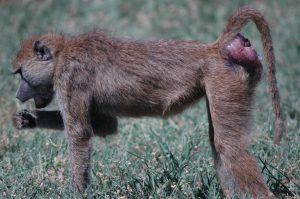
Kelly Ronald
 Kelly’s research interests lie in understanding the dynamics of communication and how the sensory processing of signals can influence the behavioral outcomes of a social interchange. Her doctoral work examined the factors that contribute to variation in male brown headed cowbird sexual signals (i.e., song and visual display) and how female’s sensory physiology can influence her mating preferences for those multimodal signals. Her postdoctoral work with Laura Hurley will extend her work to examine the role of serotonin in multimodal social interactions between male and female mice. She received the Walter Clyde Allee Award from the Animal Behavior Society, an early-career award for the best paper in animal behavior. Kelly is currently an Assistant Professor in the Biology Department at Hope College.
Kelly’s research interests lie in understanding the dynamics of communication and how the sensory processing of signals can influence the behavioral outcomes of a social interchange. Her doctoral work examined the factors that contribute to variation in male brown headed cowbird sexual signals (i.e., song and visual display) and how female’s sensory physiology can influence her mating preferences for those multimodal signals. Her postdoctoral work with Laura Hurley will extend her work to examine the role of serotonin in multimodal social interactions between male and female mice. She received the Walter Clyde Allee Award from the Animal Behavior Society, an early-career award for the best paper in animal behavior. Kelly is currently an Assistant Professor in the Biology Department at Hope College.
Past Trainees: 2010-2016
Predoctoral Trainees
Christine Bergeon Burns
 Christy’s predoctoral research examined the evolution of hormone-mediated suites of traits. Hormones are important mediators of life-history trade-offs, and the multiple targets of hormones may facilitate or constrain adaptive divergence. Her research asked whether relationships between the hormone testosterone and phenotypic traits observed in one population of a songbird, the Dark-eyed junco (J. hyemalis), are consistent or different across a divergent subspecies facing different selective pressures. Further, Christy investigated how variation in neural androgen sensitivity may relate to these hormone-phenotype relationships. After completing postdoctoral study at Louisiana State University, Christy was the Director of the CISAB Mechanisms of Behavior Lab. Christy is currently a Certified Genetic Counselor at Spectrum Health.
Christy’s predoctoral research examined the evolution of hormone-mediated suites of traits. Hormones are important mediators of life-history trade-offs, and the multiple targets of hormones may facilitate or constrain adaptive divergence. Her research asked whether relationships between the hormone testosterone and phenotypic traits observed in one population of a songbird, the Dark-eyed junco (J. hyemalis), are consistent or different across a divergent subspecies facing different selective pressures. Further, Christy investigated how variation in neural androgen sensitivity may relate to these hormone-phenotype relationships. After completing postdoctoral study at Louisiana State University, Christy was the Director of the CISAB Mechanisms of Behavior Lab. Christy is currently a Certified Genetic Counselor at Spectrum Health. 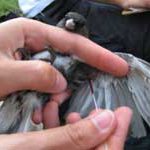
Stephanie Campos
Stephanie’s disserta tion addressed how chemical signals and specific elements within these signals impact territorial space use, and vary with habitat or signaler traits in Sceloporus lizards. This diverse genus possesses specialized scent glands on the inner thighs that exude waxy chemical secretions. She is particularly interested in understanding how these complex odor signals mediate social and sexual interactions. Her research integrates field studies of behavior with chemical and microbial analysis techniques in the lab to ask about the relative roles of signaler or receiver physiology and environment in shaping chemical communication. Stephanie is currently an Assistant Professor in the Biology Department at Villanova University.
tion addressed how chemical signals and specific elements within these signals impact territorial space use, and vary with habitat or signaler traits in Sceloporus lizards. This diverse genus possesses specialized scent glands on the inner thighs that exude waxy chemical secretions. She is particularly interested in understanding how these complex odor signals mediate social and sexual interactions. Her research integrates field studies of behavior with chemical and microbial analysis techniques in the lab to ask about the relative roles of signaler or receiver physiology and environment in shaping chemical communication. Stephanie is currently an Assistant Professor in the Biology Department at Villanova University.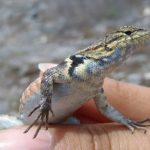
Elizabeth Carlton
 Elizabeth’s predoctoral research investigated the endocrine signals that regulate seasonal variation in sickness responses and how endocrine signals of metabolic fuel availability mediate energetic trade-offs between reproduction and immunity. She was particularly interested in the roles that glucose, insulin, and leptin may play in these processes. Elizabeth explored her research questions with ecoimmunological techniques and endocrine assays in Siberian hamsters. She received her PhD in 2015 and then earned a Masters in Secondary Education and Teaching Sciences. She went on to be a junior high science teacher in the greater Chicago area.
Elizabeth’s predoctoral research investigated the endocrine signals that regulate seasonal variation in sickness responses and how endocrine signals of metabolic fuel availability mediate energetic trade-offs between reproduction and immunity. She was particularly interested in the roles that glucose, insulin, and leptin may play in these processes. Elizabeth explored her research questions with ecoimmunological techniques and endocrine assays in Siberian hamsters. She received her PhD in 2015 and then earned a Masters in Secondary Education and Teaching Sciences. She went on to be a junior high science teacher in the greater Chicago area.
Amy Cash
 Amy’s predoctoral research used the fruit fly (Drosophila melanogaster) as a model to examine the genetic pathways that regulate gametogenesis and the correct production of female and male gametes. Specifically, her research focused on understanding two critical components of gamete production: the correct establishment of sexual identity in germ cells and the proper maintenance and differentiation of female and male germline stem cells. By studying genes involved in these processes, her research provided insight into the specific genetic pathways that underlie gamete production. Amy Cash Ahmed is now a lab manager in the lab of Gene Robinson at the University of Illinois.
Amy’s predoctoral research used the fruit fly (Drosophila melanogaster) as a model to examine the genetic pathways that regulate gametogenesis and the correct production of female and male gametes. Specifically, her research focused on understanding two critical components of gamete production: the correct establishment of sexual identity in germ cells and the proper maintenance and differentiation of female and male germline stem cells. By studying genes involved in these processes, her research provided insight into the specific genetic pathways that underlie gamete production. Amy Cash Ahmed is now a lab manager in the lab of Gene Robinson at the University of Illinois.
Amy Dapper
 Amy’s predoctoral research focused on evolution of conditionally expressed traits. Specifically, she examined how juvenile hormone regulates male and sex-dimorphic horns in the dung beetle genus Onthophagus. By better understanding how developmental mechanisms contributes to variation in the degree and direction of horn polymorphisms, her research will help to elucidate important factors underlying the evolutionary origins of morphological diversity. Amy also does evolutionary theory. She was a GTSP postdoctoral fellow in the Laboratory of Genetics at the University of Wisconsin, Madison, Advisor: Dr. Bret Payseur. Amy is currently an Associate Professor in the Department of Biological Sciences at the University of Mississippi.
Amy’s predoctoral research focused on evolution of conditionally expressed traits. Specifically, she examined how juvenile hormone regulates male and sex-dimorphic horns in the dung beetle genus Onthophagus. By better understanding how developmental mechanisms contributes to variation in the degree and direction of horn polymorphisms, her research will help to elucidate important factors underlying the evolutionary origins of morphological diversity. Amy also does evolutionary theory. She was a GTSP postdoctoral fellow in the Laboratory of Genetics at the University of Wisconsin, Madison, Advisor: Dr. Bret Payseur. Amy is currently an Associate Professor in the Department of Biological Sciences at the University of Mississippi.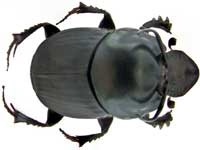
Caro Diemel
 Caro’s dissertation work investigated to which extent present and developmental environmental conditions affect the production of ovarian steroid hormones that mediate adult reproductive capacity in human females. She explored these questions by focusing on the interaction between glucocorticoid levels and the production of progestogens and estrogens across one menstrual cycle while controlling for past and present anthropometric and socioeconomic factors in healthy pre-menopausal women from Germany. Caro used liquid-chromatography-tandem-mass-spectrometry to measure these hormones in non-invasively collected urine samples in collaboration with the Endocrinology Laboratory at the Max Planck Institute for Evolutionary Anthropology in Leipzig, Germany. She is currently a Technician at the University of Vienna.
Caro’s dissertation work investigated to which extent present and developmental environmental conditions affect the production of ovarian steroid hormones that mediate adult reproductive capacity in human females. She explored these questions by focusing on the interaction between glucocorticoid levels and the production of progestogens and estrogens across one menstrual cycle while controlling for past and present anthropometric and socioeconomic factors in healthy pre-menopausal women from Germany. Caro used liquid-chromatography-tandem-mass-spectrometry to measure these hormones in non-invasively collected urine samples in collaboration with the Endocrinology Laboratory at the Max Planck Institute for Evolutionary Anthropology in Leipzig, Germany. She is currently a Technician at the University of Vienna.
Mollee Farrell
 Mollee’s predoctoral research examined sex differences in behavioral, physiological, and morphological responses to chronic stress. Specifically, she investigated how gonadal hormones contribute to stress-induced changes in medial prefrontal cortex and amygdala in both males and females. Her research aims to characterize the relationship between sex differences and alterations in structure and function in the corticolimbic circuit due to stress. Mollee conducted postdoctoral research at Northeastern University under the guidance of Rebecca Shansky.
Mollee’s predoctoral research examined sex differences in behavioral, physiological, and morphological responses to chronic stress. Specifically, she investigated how gonadal hormones contribute to stress-induced changes in medial prefrontal cortex and amygdala in both males and females. Her research aims to characterize the relationship between sex differences and alterations in structure and function in the corticolimbic circuit due to stress. Mollee conducted postdoctoral research at Northeastern University under the guidance of Rebecca Shansky.
Amanda Gibson
 Amanda studied the role host-parasite coevolution plays in the evolution and maintenance of sexual reproduction, using a mixed (sexual and asexual) population of freshwater snails in New Zealand. She also studied the effect of coevolution on the evolution of reduced antagonism in C. elegans and its virulent bacterial pathogen, Serratia. She also conducted a phylogenetic test of the Red Queen Hypothesis using nematodes and their various pathogens. Amanda did a postdoctoral fellowship at Emory University as part of NIH’s Fellowships in Research and Science Teaching program, and was awarded the John Maynard Smith Prize as an outstanding young evolutionary biologist by the European Society for Evolutionary Biology; she was also a co-winner of the TH Huxley Prize from the Society for the Study of Evolution. This is a prestigious prize for contributions to education by a young research scientist. Amanda is now an Assistant Professor at the University of Virginia.
Amanda studied the role host-parasite coevolution plays in the evolution and maintenance of sexual reproduction, using a mixed (sexual and asexual) population of freshwater snails in New Zealand. She also studied the effect of coevolution on the evolution of reduced antagonism in C. elegans and its virulent bacterial pathogen, Serratia. She also conducted a phylogenetic test of the Red Queen Hypothesis using nematodes and their various pathogens. Amanda did a postdoctoral fellowship at Emory University as part of NIH’s Fellowships in Research and Science Teaching program, and was awarded the John Maynard Smith Prize as an outstanding young evolutionary biologist by the European Society for Evolutionary Biology; she was also a co-winner of the TH Huxley Prize from the Society for the Study of Evolution. This is a prestigious prize for contributions to education by a young research scientist. Amanda is now an Assistant Professor at the University of Virginia.
Rachel Hanauer
 In an increasingly urban world, it is necessary to understand the effects of living in urban habitats on animals. Rachel’s dissertation asked 1) How do urban animals differ from non-urban conspecifics? And 2) What processes lead to these phenotypic differences? One aspect of urban environments is the frequency of anthropogenic stressors, and so in her dissertation she targeted the physiological responses to acute stressors. The glucocorticoid stress response coordinates many systems, including immunity and behavior. She was interested in the interactions between hormones, immunity, and parasitism, and so she studied hormones and immune function in the context of parasites, both at the scale of the individual bird’s infections and the prevalence within a population. Her dissertation examined the effects of disturbance on stress responsiveness, immunity, and parasitism both by observing existing variation in the field birds, and by manipulating frequency of disturbance in captivity. Rachel is currently pursuing a career in nursing.
In an increasingly urban world, it is necessary to understand the effects of living in urban habitats on animals. Rachel’s dissertation asked 1) How do urban animals differ from non-urban conspecifics? And 2) What processes lead to these phenotypic differences? One aspect of urban environments is the frequency of anthropogenic stressors, and so in her dissertation she targeted the physiological responses to acute stressors. The glucocorticoid stress response coordinates many systems, including immunity and behavior. She was interested in the interactions between hormones, immunity, and parasitism, and so she studied hormones and immune function in the context of parasites, both at the scale of the individual bird’s infections and the prevalence within a population. Her dissertation examined the effects of disturbance on stress responsiveness, immunity, and parasitism both by observing existing variation in the field birds, and by manipulating frequency of disturbance in captivity. Rachel is currently pursuing a career in nursing.
Winnie Ho
 Winnie’s predoctoral research focused on the evolution of the physiological mechanisms that underlie sexually dimorphic behavior. Specifically, she investigated how the neuroendocrine pathways regulating electrocommunication behavior in black ghost knifefish (Apteronotus albifrons), differ across populations that show variation in the magnitude of sexual dimorphism in those electrocommunication signals. Winnie completed her PhD in 2013 and went on to do postdoctoral research with Stacey Smith at the University of Colorado, studying the evolution of the molecular pathway that regulates flower coloration. She then was an NSF Math-Bio postdoctoral fellow in the lab of Jeff Riffell at the University of Washington, studying the co-evolution of insect olfactory systems with the odorants used for pollinator vs. prey attraction in carnivorous plants. She is currently a Senior Medical Writer for Penumbra, Inc.
Winnie’s predoctoral research focused on the evolution of the physiological mechanisms that underlie sexually dimorphic behavior. Specifically, she investigated how the neuroendocrine pathways regulating electrocommunication behavior in black ghost knifefish (Apteronotus albifrons), differ across populations that show variation in the magnitude of sexual dimorphism in those electrocommunication signals. Winnie completed her PhD in 2013 and went on to do postdoctoral research with Stacey Smith at the University of Colorado, studying the evolution of the molecular pathway that regulates flower coloration. She then was an NSF Math-Bio postdoctoral fellow in the lab of Jeff Riffell at the University of Washington, studying the co-evolution of insect olfactory systems with the odorants used for pollinator vs. prey attraction in carnivorous plants. She is currently a Senior Medical Writer for Penumbra, Inc.
Aubrey Kelly
 Aubrey Kelly’s predoctoral research focused on the ways in which nonapeptides (vasopressin- and oxytocin-like peptides) and dopamine systems modulate social, reproductive, and anxiety-like behaviors in sex- and phenotypic-specific ways in songbirds. Aubrey completed her PhD in 2014 and then became an NIH National Research Service Award (NRSA) Fellow doing postdoctoral research with Alexander Ophir at Cornell University. Aubrey is currently an Associate Professor at Emory University in the Department of Psychology, Neuroscience & Animal Behavior Program.
Aubrey Kelly’s predoctoral research focused on the ways in which nonapeptides (vasopressin- and oxytocin-like peptides) and dopamine systems modulate social, reproductive, and anxiety-like behaviors in sex- and phenotypic-specific ways in songbirds. Aubrey completed her PhD in 2014 and then became an NIH National Research Service Award (NRSA) Fellow doing postdoctoral research with Alexander Ophir at Cornell University. Aubrey is currently an Associate Professor at Emory University in the Department of Psychology, Neuroscience & Animal Behavior Program.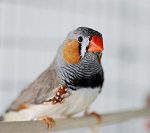
Ali Ossip-Klein
 Alison’s research investigated the physiological and environmental factors that shape the evolution of sexual dimorphism in color across Sceloporus lizard species. She was particularly interested in the role of color as an aggressive signal as well as the evolutionary causes and consequences of signal loss. Alison explored these questions using behavioral studies in the field and phylogenetic comparative methods in the lab. She completed her PhD in 2015 and is now an Assistant Professor of Environmental Science in the Department of Chemistry and Physical Sciences at Marian University.
Alison’s research investigated the physiological and environmental factors that shape the evolution of sexual dimorphism in color across Sceloporus lizard species. She was particularly interested in the role of color as an aggressive signal as well as the evolutionary causes and consequences of signal loss. Alison explored these questions using behavioral studies in the field and phylogenetic comparative methods in the lab. She completed her PhD in 2015 and is now an Assistant Professor of Environmental Science in the Department of Chemistry and Physical Sciences at Marian University.
Mark Peterson
 Mark’s predoctoral research focused on the role of hormone-mediated gene expression in explaining behavioral and physiological differences between the sexes. Males and females share nearly identical genomes, yet often differ dramatically in both appearance and behavior. Understanding the ways in which gene expression explains these differences allows investigation into dimorphism and suggests ways in which species divergence may proceed. Because hormones often differ between the sexes, and correlate with dimorphic phenotypes, it is important to understand their role in developing and maintaining sexual dimorphism and individual variation. Mark received his PhD in 2013 and is currently employed as a Data Scientist at Life Sciences Innovation, but continues collaborations with former colleagues and is interested in big data.
Mark’s predoctoral research focused on the role of hormone-mediated gene expression in explaining behavioral and physiological differences between the sexes. Males and females share nearly identical genomes, yet often differ dramatically in both appearance and behavior. Understanding the ways in which gene expression explains these differences allows investigation into dimorphism and suggests ways in which species divergence may proceed. Because hormones often differ between the sexes, and correlate with dimorphic phenotypes, it is important to understand their role in developing and maintaining sexual dimorphism and individual variation. Mark received his PhD in 2013 and is currently employed as a Data Scientist at Life Sciences Innovation, but continues collaborations with former colleagues and is interested in big data.
Jakki Petzold
 Jakki studied sex differences in electric organ discharges (EODs) and the modulations in EOD frequency and amplitude used as communication signals (“chirps”) in the South American ghost knifefish Parapteronotus hasemani. She was interested in how fish perceive and discriminate among conspecific EODs and chirps. She completed her PhD in 2016, and is currently working an Assistant Research Scientist in the Center for Postsecondary Research at Indiana University.
Jakki studied sex differences in electric organ discharges (EODs) and the modulations in EOD frequency and amplitude used as communication signals (“chirps”) in the South American ghost knifefish Parapteronotus hasemani. She was interested in how fish perceive and discriminate among conspecific EODs and chirps. She completed her PhD in 2016, and is currently working an Assistant Research Scientist in the Center for Postsecondary Research at Indiana University.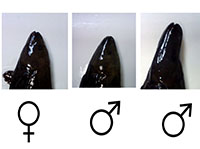
Nikki Rendon
 Nikki’s work converged on the interactions among ecology, physiology, and behavior. Her dissertation work provided insights into the physiological mechanisms regulating female aggression, and how these mechanisms change with reproductive state and across seasons. As sex steroid hormones are known to mediate the expression of competitive traits and behaviors, she focused on the specific factors that regulate hormone synthesis and function. Nikki’s work bridged multiple levels of complexity by delineating the interactions among androgens, estrogens and their respective tissues of action in order to describe how specific attributes of physiology coalesce to mediate aggression. Nikki received her PhD in 2016 and is currently Senior Director, Medical & Scientific Affairs at Avant Healthcare.
Nikki’s work converged on the interactions among ecology, physiology, and behavior. Her dissertation work provided insights into the physiological mechanisms regulating female aggression, and how these mechanisms change with reproductive state and across seasons. As sex steroid hormones are known to mediate the expression of competitive traits and behaviors, she focused on the specific factors that regulate hormone synthesis and function. Nikki’s work bridged multiple levels of complexity by delineating the interactions among androgens, estrogens and their respective tissues of action in order to describe how specific attributes of physiology coalesce to mediate aggression. Nikki received her PhD in 2016 and is currently Senior Director, Medical & Scientific Affairs at Avant Healthcare.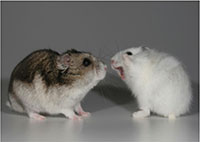
Lauren Rudolph
 Lauren’s research focused on the role of estrogens in the development of the spinal nucleus of the bulbocavernosus (SNB), a sexually dimorphic motor nucleus that controls erections and ejaculations in rats. Estrogen-controlled SNB development occurs during a critical period, and her research focused on the mechanisms by which the estrogen sensitivity of SNB motoneuron morphology is limited to this developmentally restricted critical period. Specifically, she was interested in the roles of estrogen receptor alpha (ERα) and brain-derived neurotrophic factor (BDNF) in mediating estrogen-dependent SNB dendrite growth during the early postnatal period. She completed her PhD in 2014. After conducting postdoctoral research at UCLA under the direction of Dr. Paul Micevych, she is now an Assistant Professor of Neuroscience at Kenyon College.
Lauren’s research focused on the role of estrogens in the development of the spinal nucleus of the bulbocavernosus (SNB), a sexually dimorphic motor nucleus that controls erections and ejaculations in rats. Estrogen-controlled SNB development occurs during a critical period, and her research focused on the mechanisms by which the estrogen sensitivity of SNB motoneuron morphology is limited to this developmentally restricted critical period. Specifically, she was interested in the roles of estrogen receptor alpha (ERα) and brain-derived neurotrophic factor (BDNF) in mediating estrogen-dependent SNB dendrite growth during the early postnatal period. She completed her PhD in 2014. After conducting postdoctoral research at UCLA under the direction of Dr. Paul Micevych, she is now an Assistant Professor of Neuroscience at Kenyon College.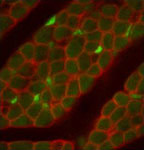
Sam Slowinski
 Sam’s research focused on host-parasite coevolution and disease transmission. He studied the effect of antagonistic coevolutionary interactions with parasites on the evolution of host breeding systems in an experimental Caenorhabditis elegans nematode host/Serratia marcescens bacterial parasite laboratory system. Additionally, he worked with dark-eyed juncos (Junco hyemalis) in the field in order to assess the mechanisms by which haemosporidian parasites alter the attractiveness of birds to disease vectors. Sam is currently an Assistant Professor in the School of Biological Sciences at the University of New England.
Sam’s research focused on host-parasite coevolution and disease transmission. He studied the effect of antagonistic coevolutionary interactions with parasites on the evolution of host breeding systems in an experimental Caenorhabditis elegans nematode host/Serratia marcescens bacterial parasite laboratory system. Additionally, he worked with dark-eyed juncos (Junco hyemalis) in the field in order to assess the mechanisms by which haemosporidian parasites alter the attractiveness of birds to disease vectors. Sam is currently an Assistant Professor in the School of Biological Sciences at the University of New England.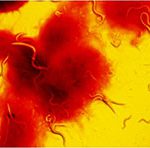
Melissa Toups
 Melissa’s predoctoral research investigated the process of sex-chromosome formation and the genomic consequences of sex-chromosome evolution. Sex chromosomes are thought to be instrumental in resolving sexual antagonism through their sex-biased or sex-specific inheritance. Melissa’s research examined how sexual conflict is resolved by studying evolution of nonmodel sex-chromosome systems, such as birds (ZZ/ZW), monotremes (multiple-X), and the mosquito Aedes aegypti (homomorphic sex chromosomes). Specifically, she studied gene movement, sex-biased gene expression, and structural changes associated with the evolution of sex chromosomes in these systems. Melissa completed her PhD in 2014 and pursued postdoctoral studies at the University of Texas. She is currently an Assistant Professor of Evolutionary Biology at the University of Louisiana at Lafayette.
Melissa’s predoctoral research investigated the process of sex-chromosome formation and the genomic consequences of sex-chromosome evolution. Sex chromosomes are thought to be instrumental in resolving sexual antagonism through their sex-biased or sex-specific inheritance. Melissa’s research examined how sexual conflict is resolved by studying evolution of nonmodel sex-chromosome systems, such as birds (ZZ/ZW), monotremes (multiple-X), and the mosquito Aedes aegypti (homomorphic sex chromosomes). Specifically, she studied gene movement, sex-biased gene expression, and structural changes associated with the evolution of sex chromosomes in these systems. Melissa completed her PhD in 2014 and pursued postdoctoral studies at the University of Texas. She is currently an Assistant Professor of Evolutionary Biology at the University of Louisiana at Lafayette.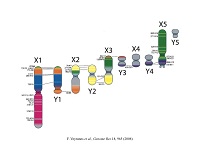
Leah Wilson
 Leah’s research focused on the neuroendocrine mechanisms underlying seasonal variation in flocking and aggression. She was interested in investigating the roles that the nonapeptides (vasopressin- and oxytocin-like peptides), vasoactive intestinal polypeptide, and corticotropin-releasing hormone play in modulating the seasonal expression of affiliative and aggressive behavior in male and female songbirds. Leah completed her PhD in 2016 and is currently an Assistant Professor of Neuroscience at Muhlenberg College.
Leah’s research focused on the neuroendocrine mechanisms underlying seasonal variation in flocking and aggression. She was interested in investigating the roles that the nonapeptides (vasopressin- and oxytocin-like peptides), vasoactive intestinal polypeptide, and corticotropin-releasing hormone play in modulating the seasonal expression of affiliative and aggressive behavior in male and female songbirds. Leah completed her PhD in 2016 and is currently an Assistant Professor of Neuroscience at Muhlenberg College.
Postdoctoral Trainees
Oliver Beckers
 Oliver’s postdoctoral research investigated how development and genes coordinate the matched expression of morphology and reproductive behavior, using molecular and behavioral assays. He studied males in the dung beetle, Onthophagus taurus, which express two distinct morphological phenotypes in response to early nutrition: high-nutrition males express large head horns, while low-nutrition males do not develop horns as adults. Males display alternative behavior that is functionally linked to horn expression. Horned males fight for females; hornless males adopt a sneaking strategy. Hornless males are unsuccessful ‘fighters’ and horned males are unsuccessful ‘sneakers’. Oliver studied how this match between behavior and morphology develops. He is currently an Associate Professor in the Department of Biological Sciences at Murray State University.
Oliver’s postdoctoral research investigated how development and genes coordinate the matched expression of morphology and reproductive behavior, using molecular and behavioral assays. He studied males in the dung beetle, Onthophagus taurus, which express two distinct morphological phenotypes in response to early nutrition: high-nutrition males express large head horns, while low-nutrition males do not develop horns as adults. Males display alternative behavior that is functionally linked to horn expression. Horned males fight for females; hornless males adopt a sneaking strategy. Hornless males are unsuccessful ‘fighters’ and horned males are unsuccessful ‘sneakers’. Oliver studied how this match between behavior and morphology develops. He is currently an Associate Professor in the Department of Biological Sciences at Murray State University.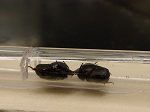
Justin Garcia
 Justin’s research focuses on the biocultural foundations of human sexual behavior, particularly social and sexual monogamy. His recent work has focused on the regulation of sexual and reproductive life histories, intimate touch, and romantic and sexual relationships across the life course.
Justin’s research focuses on the biocultural foundations of human sexual behavior, particularly social and sexual monogamy. His recent work has focused on the regulation of sexual and reproductive life histories, intimate touch, and romantic and sexual relationships across the life course.
J ustin is currently the Ruth Halls Professor of Gender Studies and Executive Director at The Kinsey Institute, Indiana University.
ustin is currently the Ruth Halls Professor of Gender Studies and Executive Director at The Kinsey Institute, Indiana University.
Jennifer Hackney
 Jennifer’s postdoctoral research used the fruit fly (Drosophila melanogaster) as a model to examine endocrine-immune interactions during development. Specifically, her research focused on understanding the mechanism by which injury to specific tissues leads to a global delay in development (e.g. prolonged larval and pupal stages) characterized by decreased synthesis of the steroid hormone ecdysone. In addition, she examined how injury to adult females affects ovarian follicle development, an ecdysone dependent process. She is now an Associate Professor in the School of Mathematical and Natural Sciences at Arizona State University.
Jennifer’s postdoctoral research used the fruit fly (Drosophila melanogaster) as a model to examine endocrine-immune interactions during development. Specifically, her research focused on understanding the mechanism by which injury to specific tissues leads to a global delay in development (e.g. prolonged larval and pupal stages) characterized by decreased synthesis of the steroid hormone ecdysone. In addition, she examined how injury to adult females affects ovarian follicle development, an ecdysone dependent process. She is now an Associate Professor in the School of Mathematical and Natural Sciences at Arizona State University.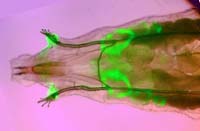
Tierney Lorenz
 Tierney’s research examined the interactions among sex and sexuality, mental health, and physical health in women. Their predoctoral work included psychophysiological studies of antidepressant use, sympathetic nervous system activity and genital arousal, clinical trials of behavior and writing-based therapies to improve sexual wellbeing in women with mood disorders, and cross-sectional studies of frequency of sexual activity and immunologic markers in men and women with and without mood disorders. Tierney’s post-doctoral research examined how the presence or absence of sexual activity may influence immune response in healthy human females across the menstrual cycle. They are now following up this research, studying how sexual arousal influences immune response in women taking hormonal medications. Tierney is currently an Associate Professor of Psychology and the Center for Brain, Biology, and Behavior at the University of Nebraska.
Tierney’s research examined the interactions among sex and sexuality, mental health, and physical health in women. Their predoctoral work included psychophysiological studies of antidepressant use, sympathetic nervous system activity and genital arousal, clinical trials of behavior and writing-based therapies to improve sexual wellbeing in women with mood disorders, and cross-sectional studies of frequency of sexual activity and immunologic markers in men and women with and without mood disorders. Tierney’s post-doctoral research examined how the presence or absence of sexual activity may influence immune response in healthy human females across the menstrual cycle. They are now following up this research, studying how sexual arousal influences immune response in women taking hormonal medications. Tierney is currently an Associate Professor of Psychology and the Center for Brain, Biology, and Behavior at the University of Nebraska.
Kim Rosvall
 Kim joined the training grant in 2009 after conducting her dissertation work on the evolution of intrasexual aggression in female birds. As a postdoctoral researcher, Kim focusing instead on sex differences in neuroendocrine mechanisms of aggression. At the completion of her postdoctoral training, Kim received a $416,000 grant from the National Institute of Child Health and Development (NICHD) to study how violent and aggressive experiences alter gene regulatory networks in the brain and periphery. Kim continues to study the mechanistic bases of behavioral adaptation/acclimation and how these mechanisms change over evolutionary time as an Associate Professor in the Biology Department at Indiana University.
Kim joined the training grant in 2009 after conducting her dissertation work on the evolution of intrasexual aggression in female birds. As a postdoctoral researcher, Kim focusing instead on sex differences in neuroendocrine mechanisms of aggression. At the completion of her postdoctoral training, Kim received a $416,000 grant from the National Institute of Child Health and Development (NICHD) to study how violent and aggressive experiences alter gene regulatory networks in the brain and periphery. Kim continues to study the mechanistic bases of behavioral adaptation/acclimation and how these mechanisms change over evolutionary time as an Associate Professor in the Biology Department at Indiana University.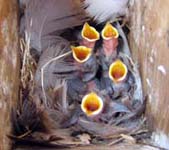
Adam Smith
 Adam’s research focused on the evolution of hormonal mechanisms in the brain that underlie the diversification of sexually dimorphic signals. He used knifefishes of the order Gymnotiformes for this purpose. These fish emit electric fields for environmental detection and social communication, and all species display sexual dimorphism in some parameter of their electric signal. Adam profiled the expression of hormone receptor genes in two brain regions devoted to controlling sexually dimorphic signals in a comparative panel of four species. By using a set of species that represent multiple axes of signal divergence, he asked if the molecular mechanisms underlying signal evolution are convergent or divergent. Adam went on to be a Lecturer at Indiana University, Bloomington, and is currently a Research Specialist in the Institute of Life and Environmental Sciences at the University of Iceland.
Adam’s research focused on the evolution of hormonal mechanisms in the brain that underlie the diversification of sexually dimorphic signals. He used knifefishes of the order Gymnotiformes for this purpose. These fish emit electric fields for environmental detection and social communication, and all species display sexual dimorphism in some parameter of their electric signal. Adam profiled the expression of hormone receptor genes in two brain regions devoted to controlling sexually dimorphic signals in a comparative panel of four species. By using a set of species that represent multiple axes of signal divergence, he asked if the molecular mechanisms underlying signal evolution are convergent or divergent. Adam went on to be a Lecturer at Indiana University, Bloomington, and is currently a Research Specialist in the Institute of Life and Environmental Sciences at the University of Iceland.
Past Trainees: 2005-2010
Predoctoral Trainees
Jennifer “Jef” Akst
 Jef’s predoctoral research investigated mating systems and sexual selection in the lined seahorse, Hippocampus erectus. Through a series of controlled laboratory experiments with captive animals, she examined the courtship behavior of this species and explored the mate choice behavior of both sexes. Jef received her MA in 2009 and is currently the Managing editor at BioSpace.
Jef’s predoctoral research investigated mating systems and sexual selection in the lined seahorse, Hippocampus erectus. Through a series of controlled laboratory experiments with captive animals, she examined the courtship behavior of this species and explored the mate choice behavior of both sexes. Jef received her MA in 2009 and is currently the Managing editor at BioSpace.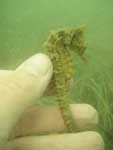
Jonathan Atwell
 Jonathan’s predoctoral research focused on evaluating how associated hormonal, immunological, morphological, and behavioral traits have responded in integrated or independent ways following a unique colonization event, in which a historically montane-breeding songbird (the Dark-eyed junco) established an isolated population in an urban, coastal environment. This system provides an ideal opportunity to study rapid evolution and adaptive plasticity, and Jonathan is investigating these questions with respect to population differences, sex differences, seasonality, and patterns of trait covariation. Jonathan received his PhD in 2011.
Jonathan’s predoctoral research focused on evaluating how associated hormonal, immunological, morphological, and behavioral traits have responded in integrated or independent ways following a unique colonization event, in which a historically montane-breeding songbird (the Dark-eyed junco) established an isolated population in an urban, coastal environment. This system provides an ideal opportunity to study rapid evolution and adaptive plasticity, and Jonathan is investigating these questions with respect to population differences, sex differences, seasonality, and patterns of trait covariation. Jonathan received his PhD in 2011.
Yaniv Brandvain
 Yaniv’s predoctoral research investigated the evolutionary consequences of systems of mating, such as inbreeding/outbreeding and monandry/polyandry. He considered how inbreeding affects the probability of fixation of good gene combinations, and also examined the evolution of genomic imprinting under differing mating systems with both theory and data. Yaniv completed his PhD in 2010 and was a postdoctoral researcher at UC Davis. Currently, Yaniv is an Associate Professor in the College of Biological Sciences at the University of Minnesota – Twin Cities. A major focus of his research is how the mode of plant reproduction influences plant speciation, diversity and distribution.
Yaniv’s predoctoral research investigated the evolutionary consequences of systems of mating, such as inbreeding/outbreeding and monandry/polyandry. He considered how inbreeding affects the probability of fixation of good gene combinations, and also examined the evolution of genomic imprinting under differing mating systems with both theory and data. Yaniv completed his PhD in 2010 and was a postdoctoral researcher at UC Davis. Currently, Yaniv is an Associate Professor in the College of Biological Sciences at the University of Minnesota – Twin Cities. A major focus of his research is how the mode of plant reproduction influences plant speciation, diversity and distribution.
Kristal Cain
 Kristal’s predoctoral research examined the mechanisms and selection pressures that lead to sex differences in morphology and behavior. She looked at females that are male typical in body size or coloring (or androgynous) to determine is they are also more similar to males in behavior, which would indicate a common mechanism controlling trait expression. She also worked to determine if exposure to androgens during development or in adulthood is driving this covariation, and whether there are consequences for androgynous females’ survival and reproductive success. Kristal completed a position as a Postdoctoral Fellow at the Australian National University – Ecology, Evolution & Genetics and is now a Senior Lecturer (Associate Professor) in Biological Sciences at the University of Auckland.
Kristal’s predoctoral research examined the mechanisms and selection pressures that lead to sex differences in morphology and behavior. She looked at females that are male typical in body size or coloring (or androgynous) to determine is they are also more similar to males in behavior, which would indicate a common mechanism controlling trait expression. She also worked to determine if exposure to androgens during development or in adulthood is driving this covariation, and whether there are consequences for androgynous females’ survival and reproductive success. Kristal completed a position as a Postdoctoral Fellow at the Australian National University – Ecology, Evolution & Genetics and is now a Senior Lecturer (Associate Professor) in Biological Sciences at the University of Auckland.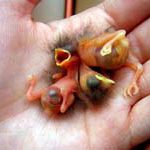
Idelle Cooper
 Idelle’s predoctoral research focused on the evolution of sex differences, particularly by natural selection, by examining color patterns and ecological niche type in the Hawaiian Megalagrion damselfly phylogeny. This research was completed using a combination of field surveys of the distribution of color patterns and measuring correlated ecological variables, as well as conducting lab and field experiments to identify the selective pressures on color. Idelle received her PhD in 2008 and is currently an Associate Professor of Biology at Grinnell College.
Idelle’s predoctoral research focused on the evolution of sex differences, particularly by natural selection, by examining color patterns and ecological niche type in the Hawaiian Megalagrion damselfly phylogeny. This research was completed using a combination of field surveys of the distribution of color patterns and measuring correlated ecological variables, as well as conducting lab and field experiments to identify the selective pressures on color. Idelle received her PhD in 2008 and is currently an Associate Professor of Biology at Grinnell College.
Timothy Greives
 Tim’s predoctoral research examined how environmentally relevant cues are integrated by organisms allowing appropriate alteration of reproductive status. Specifically, he focused on the neuropeptide kisspeptin, investigating its effects in hamsters housed in “summer-like” and “winter-like” photoperiods. Tim received his PhD in 2009, pursued postdoctoral research at the Max Planck Institute for Ornithology, Radolfzell, Germany, and is now an Associate Professor of Biology at North Dakota State University.
Tim’s predoctoral research examined how environmentally relevant cues are integrated by organisms allowing appropriate alteration of reproductive status. Specifically, he focused on the neuropeptide kisspeptin, investigating its effects in hamsters housed in “summer-like” and “winter-like” photoperiods. Tim received his PhD in 2009, pursued postdoctoral research at the Max Planck Institute for Ornithology, Radolfzell, Germany, and is now an Associate Professor of Biology at North Dakota State University.
Britt Heidinger
 Britt’s predoctoral research was designed to investigate whether modifications of the stress response underlie age-related changes in reproductive effort in a long-lived seabird, the common tern. Britt tested whether older parents have higher reproductive performance than younger parents in part because they respond less strongly to stressors. Britt received her PhD in 2007 and was a postdoctoral fellow in the laboratory of Pat Monaghan, Division of Environmental and Evolutionary Biology, University of Glasgow. Britt is currently an Associate Professor at North Dakota State University.
Britt’s predoctoral research was designed to investigate whether modifications of the stress response underlie age-related changes in reproductive effort in a long-lived seabird, the common tern. Britt tested whether older parents have higher reproductive performance than younger parents in part because they respond less strongly to stressors. Britt received her PhD in 2007 and was a postdoctoral fellow in the laboratory of Pat Monaghan, Division of Environmental and Evolutionary Biology, University of Glasgow. Britt is currently an Associate Professor at North Dakota State University.
James Klatt
 James’ predoctoral research examined the evolution of the neural systems associated with social bonding. His research focused on sex differences in the oxytocin and vasopressin family of neuropeptides and their effects on pair bonding and parental care in the zebra finch (Taeniopygia guttata).
James’ predoctoral research examined the evolution of the neural systems associated with social bonding. His research focused on sex differences in the oxytocin and vasopressin family of neuropeptides and their effects on pair bonding and parental care in the zebra finch (Taeniopygia guttata).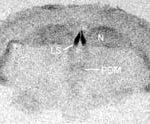
Liz Lehman
 Liz’s predoctoral research investigated the role of tetrodotoxin (TTX) in rough-skinned newt (Taricha granulosa) eggs as an antipredator mechanism, examining the effect of egg toxicity on reproductive success. Liz received her PhD in 2006 and went on to be the Associate Director of Science Programs at the Center for Elementary Math and Science Education at the University of Chicago, where she supported elementary science teachers in their classrooms and developed elementary science curricula. She is currently the
Liz’s predoctoral research investigated the role of tetrodotoxin (TTX) in rough-skinned newt (Taricha granulosa) eggs as an antipredator mechanism, examining the effect of egg toxicity on reproductive success. Liz received her PhD in 2006 and went on to be the Associate Director of Science Programs at the Center for Elementary Math and Science Education at the University of Chicago, where she supported elementary science teachers in their classrooms and developed elementary science curricula. She is currently the 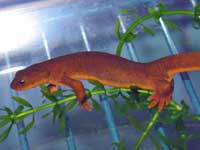
Kathryn Lenz
 Katy’s predoctoral research focused on the effects of early maternal care on neural and behavioral development. Specifically, Katy examined whether alterations in maternal licking influence the development of the spinal nucleus of the bulbocavernosus (SNB) in rats, a motor nucleus in the lumbar spinal cord involved in the production of male sexual behavior. Katy received her PhD in 2009 and was a post-doctoral researcher at the School of Medicine, University of Maryland-Baltimore. Presently, she is an Associate Professor in the Department of Psychology and the Department of Neuroscience at The Ohio State University.
Katy’s predoctoral research focused on the effects of early maternal care on neural and behavioral development. Specifically, Katy examined whether alterations in maternal licking influence the development of the spinal nucleus of the bulbocavernosus (SNB) in rats, a motor nucleus in the lumbar spinal cord involved in the production of male sexual behavior. Katy received her PhD in 2009 and was a post-doctoral researcher at the School of Medicine, University of Maryland-Baltimore. Presently, she is an Associate Professor in the Department of Psychology and the Department of Neuroscience at The Ohio State University.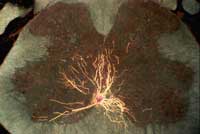
Joel McGlothlin
 Joel’s predoctoral research focused on the role of sexual selection in shaping patterns of integration among morphological, physiological, and behavioral traits, including plumage, testosterone production and parental behavior. Joel received his PhD in 2007, was a postdoc at the University of Virginia, and is now an Associate Professor of Biology at Virginia Tech. His current research focuses on the evolution of complex phenotypes in lizards and snakes.
Joel’s predoctoral research focused on the role of sexual selection in shaping patterns of integration among morphological, physiological, and behavioral traits, including plumage, testosterone production and parental behavior. Joel received his PhD in 2007, was a postdoc at the University of Virginia, and is now an Associate Professor of Biology at Virginia Tech. His current research focuses on the evolution of complex phenotypes in lizards and snakes.
Dawn O’Neal
 Dawn’s predoctoral research took a comparative approach to investigating potential mechanisms (e.g., immune function) mediating the evolution of sex differences in migratory behavior in the dark-eyed junco (Junco hyemalis). Specifically, her research dealt with the effect of environment (i.e. winter climate and recent warming events) on wintering birds and their decisions regarding choice of winter location and the effects of this choice on winter health and survival. Dawn completed her PhD in 2010 and was a postdoctoral researcher at the University of Georgia. She was the Vice President and Executive Director of Audubon Delta, the joint Louisiana, Arkansas, and Mississippi branch of the National Audubon Society for bird conservation, and is currently the CEO and Founder of New Dawn Distilling.
Dawn’s predoctoral research took a comparative approach to investigating potential mechanisms (e.g., immune function) mediating the evolution of sex differences in migratory behavior in the dark-eyed junco (Junco hyemalis). Specifically, her research dealt with the effect of environment (i.e. winter climate and recent warming events) on wintering birds and their decisions regarding choice of winter location and the effects of this choice on winter health and survival. Dawn completed her PhD in 2010 and was a postdoctoral researcher at the University of Georgia. She was the Vice President and Executive Director of Audubon Delta, the joint Louisiana, Arkansas, and Mississippi branch of the National Audubon Society for bird conservation, and is currently the CEO and Founder of New Dawn Distilling.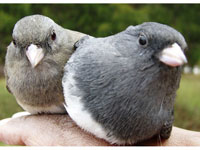
Mayté Ruiz
 Mayté’s predoctoral research investigated courtship behavior in sagebrush lizards, Sceloporus graciosus. Her research focused on the interactions between male courtship display and female reproductive state. She is also interested in examining the costs associated with courtship in S. graciosus. Mayte received her PhD in 2010, and is now a Research Scientist at the University of Puerto Rico at Rio Piedras.
Mayté’s predoctoral research investigated courtship behavior in sagebrush lizards, Sceloporus graciosus. Her research focused on the interactions between male courtship display and female reproductive state. She is also interested in examining the costs associated with courtship in S. graciosus. Mayte received her PhD in 2010, and is now a Research Scientist at the University of Puerto Rico at Rio Piedras.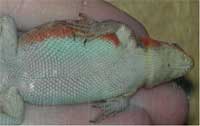
Sarah Schaack
 Sarah’s predoctoral research focused on the influence of recombination (or sex) on the gain and loss of transposable elements in Daphnia pulex, a freshwater microcrustacean. Sarah’s PhD work has bearing on the origin and evolution of sex, the repeated evolution of asexuality, the costs and benefits of recombination for hosts and parasites, and the impact of mutation load as a selective pressure influencing reproductive mode. Sarah received her PhD in 2008, completed two postdoctoral fellowships, and is currently a Professor at Reed College. Currently, she and members of her lab work on a variety of questions related to transposable element biology, genome evolution, and the effects of mutation on simple and complex traits.
Sarah’s predoctoral research focused on the influence of recombination (or sex) on the gain and loss of transposable elements in Daphnia pulex, a freshwater microcrustacean. Sarah’s PhD work has bearing on the origin and evolution of sex, the repeated evolution of asexuality, the costs and benefits of recombination for hosts and parasites, and the impact of mutation load as a selective pressure influencing reproductive mode. Sarah received her PhD in 2008, completed two postdoctoral fellowships, and is currently a Professor at Reed College. Currently, she and members of her lab work on a variety of questions related to transposable element biology, genome evolution, and the effects of mutation on simple and complex traits.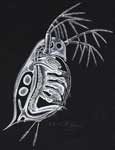
Tom Verhovshek
 The goal of Tom’s predoctoral research was to further characterize the role of androgens in the maintenance of the neuromuscular system underlying male sexual behavior. Specifically, he was interested in how androgens interact with brain-derived neurotrophic factor both centrally and peripherally to influence motoneuron morphology in the spinal nucleus of the bulbocavernosus (SNB). Tom received his PhD in 2010 and was a postdoctoral researcher at the IU School of Medicine. He is currently Director at Objective Medical, LLC in Indianapolis, Indiana.
The goal of Tom’s predoctoral research was to further characterize the role of androgens in the maintenance of the neuromuscular system underlying male sexual behavior. Specifically, he was interested in how androgens interact with brain-derived neurotrophic factor both centrally and peripherally to influence motoneuron morphology in the spinal nucleus of the bulbocavernosus (SNB). Tom received his PhD in 2010 and was a postdoctoral researcher at the IU School of Medicine. He is currently Director at Objective Medical, LLC in Indianapolis, Indiana.
Devin Zysling
 Devin’s predoctoral research focused on the physiological mechanisms underlying seasonal variation in immune response. She characterized energetic trade-offs between reproduction and immune function, using the Siberian hamster (Phodopus sungorus), a small, seasonally breeding mammal that requires long days (LD) for reproductive activity. Devin received her PhD in 2008 and is currently Senior Director, Regulatory Affairs CDx at LabCorp.
Devin’s predoctoral research focused on the physiological mechanisms underlying seasonal variation in immune response. She characterized energetic trade-offs between reproduction and immune function, using the Siberian hamster (Phodopus sungorus), a small, seasonally breeding mammal that requires long days (LD) for reproductive activity. Devin received her PhD in 2008 and is currently Senior Director, Regulatory Affairs CDx at LabCorp.
Postdoctoral Trainees
Susannah French
 Susannah’s postdoctoral research investigated the occurrence and regulation of physiological trade-offs between vital life-history processes; in particular, how energy is allocated between the reproductive and immune systems using the Siberian hamster model (Phodopus sungorus). She was also interested in how organisms regulate and maintain these key life-history processes in the face of a changing environment, especially specific aspects of anthropogenic (e.g., introduction of pathogens; degradation of habitat; altered resource availability) influence using the Galapagos marine iguana model (Amblyrhynchus cristatus). Susannah is now a Professor of Biology at Utah State University.
Susannah’s postdoctoral research investigated the occurrence and regulation of physiological trade-offs between vital life-history processes; in particular, how energy is allocated between the reproductive and immune systems using the Siberian hamster model (Phodopus sungorus). She was also interested in how organisms regulate and maintain these key life-history processes in the face of a changing environment, especially specific aspects of anthropogenic (e.g., introduction of pathogens; degradation of habitat; altered resource availability) influence using the Galapagos marine iguana model (Amblyrhynchus cristatus). Susannah is now a Professor of Biology at Utah State University.
Heather Rupp
 Heather’s postdoctoral research investigated the cognitive processing of sexual stimuli using comparative models across species, while combining behavioral, neuroendocrine, psychophysiological, and functional neuroimaging techniques to help uncover the role of the brain in sexual arousal and reproductive states. Heather is currently the Behavioral Science Director at Arcane International and continues to be a Research Fellow at The Kinsey Institute.
Heather’s postdoctoral research investigated the cognitive processing of sexual stimuli using comparative models across species, while combining behavioral, neuroendocrine, psychophysiological, and functional neuroimaging techniques to help uncover the role of the brain in sexual arousal and reproductive states. Heather is currently the Behavioral Science Director at Arcane International and continues to be a Research Fellow at The Kinsey Institute.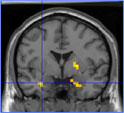
Lynn Siefferman
 Lynn’s postdoctoral research investigated the proximate determinants and evolutionary significance of blue coloration in the feathers (microstructure) and eggs (biliverdin pigments) of eastern bluebirds. Lynn has completed her postdoctoral studies and is an Associate Professor of Biology at Appalachian State University.
Lynn’s postdoctoral research investigated the proximate determinants and evolutionary significance of blue coloration in the feathers (microstructure) and eggs (biliverdin pigments) of eastern bluebirds. Lynn has completed her postdoctoral studies and is an Associate Professor of Biology at Appalachian State University.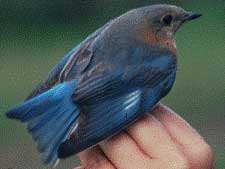

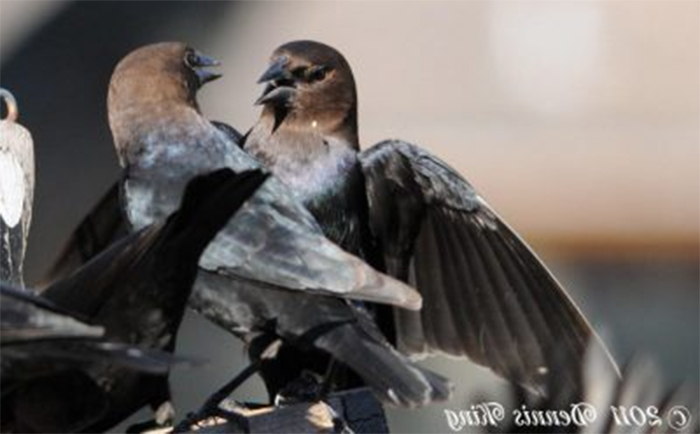
 THE COLLEGE OF ARTS + SCIENCES
THE COLLEGE OF ARTS + SCIENCES